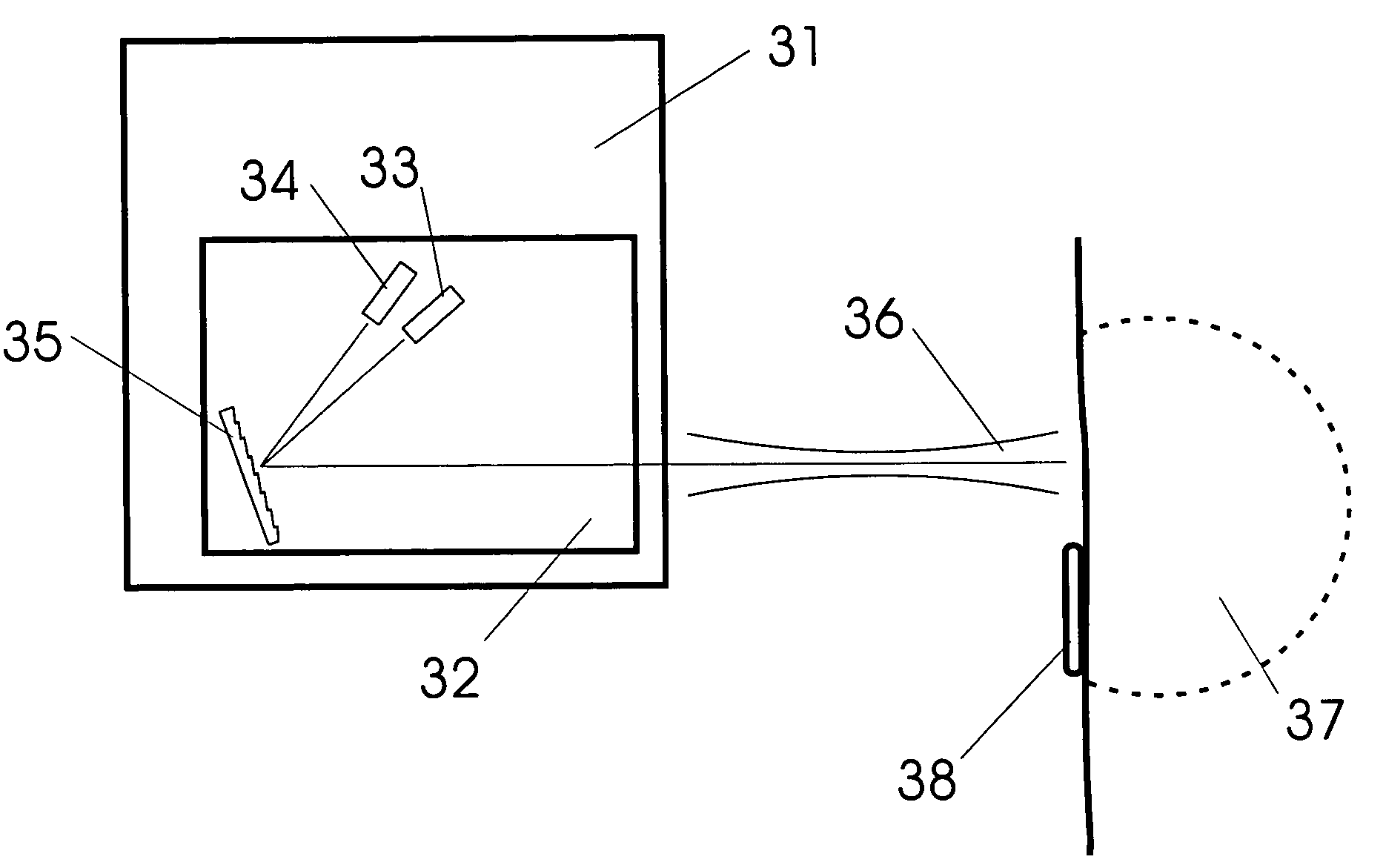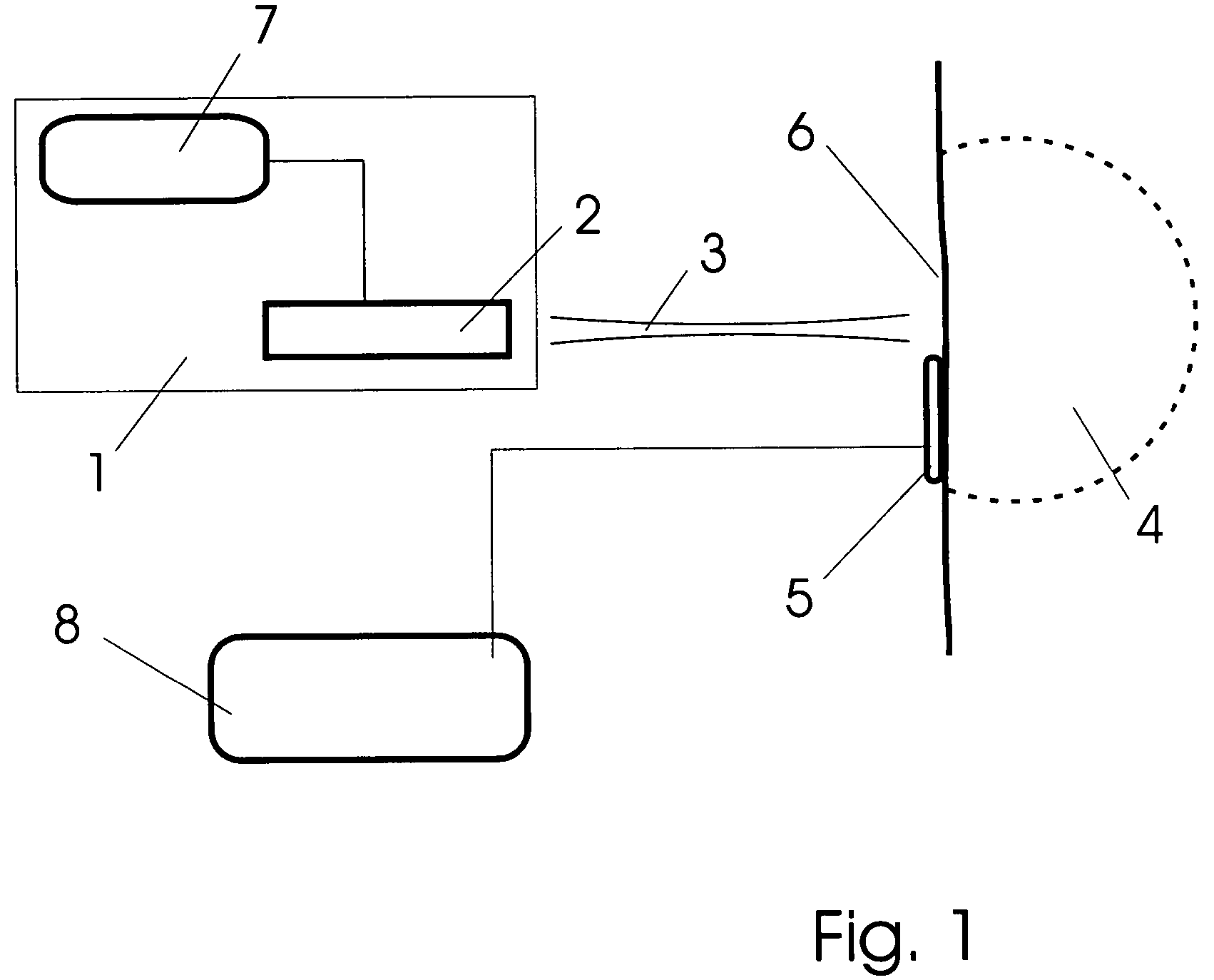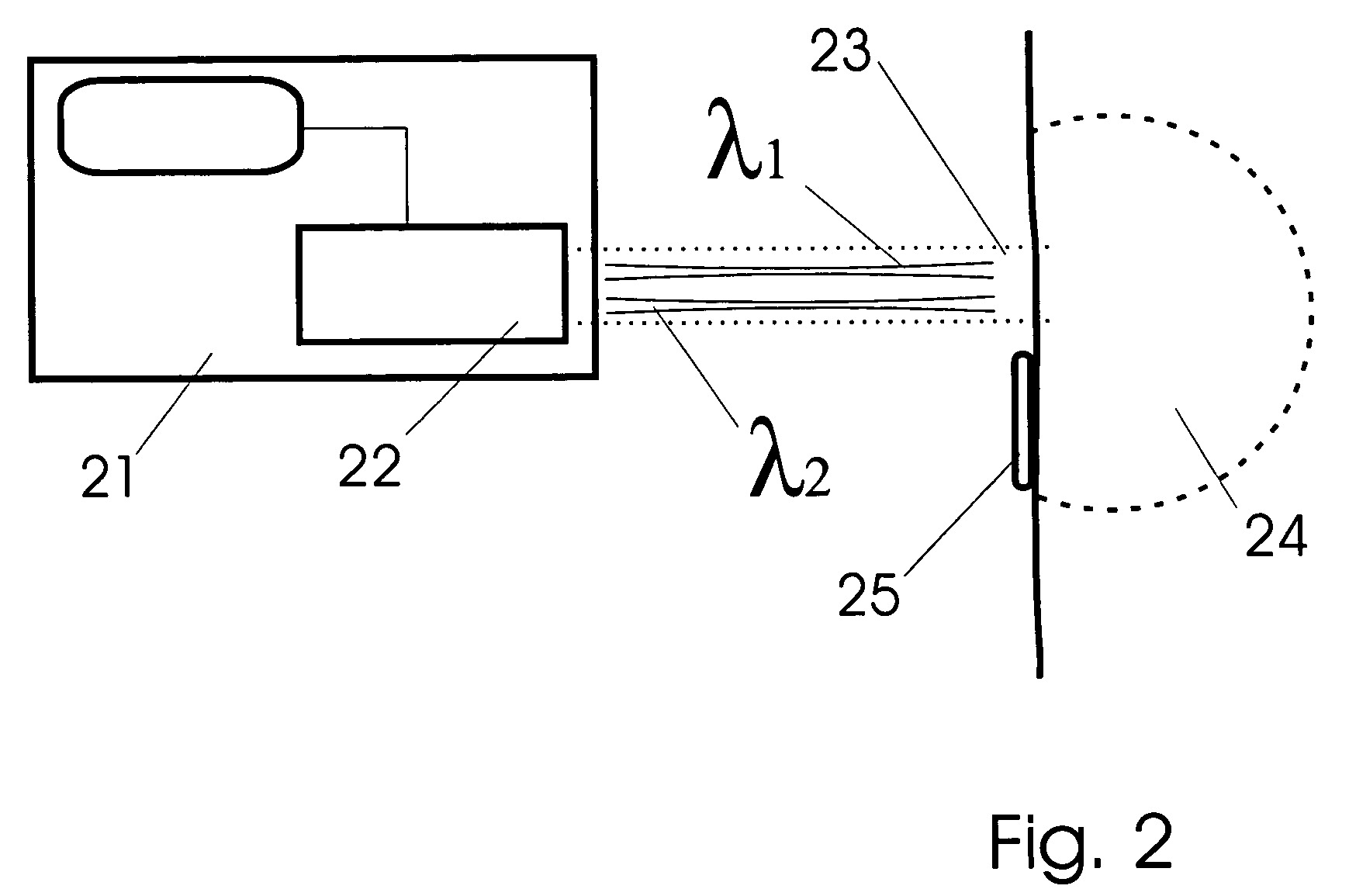Non-invasive, in vivo substance measurement systems
a substance measurement and in vivo technology, applied in the field of human blood in vivo measurement, can solve the problems of largely absorbed water in the mid-ir wave, 200,000 deaths per year, and significant pain in obtaining blood
- Summary
- Abstract
- Description
- Claims
- Application Information
AI Technical Summary
Benefits of technology
Problems solved by technology
Method used
Image
Examples
Embodiment Construction
[0056] In accordance with each of the preferred embodiments of these inventions, apparatus for and methods of non-invasive in vivo substance measurement are provided. It will be appreciated that each of these embodiments described include both an apparatus or method and that the apparatus or method of one preferred embodiment may be different than the apparatus or method of another embodiment.
[0057] Most general versions of these inventions can be described as tissue substance measuring apparatus having an optical source with one or more lasers and a pressure transducer system each respectfully coupled to the same tissue test site. Coupling between the laser(s) and the tissue is by way of an optical path which permits transmission of optical energy characterized as middle infrared, Mid-IR, from the optical source into said tissue. Coupling between the pressure transducer system and the tissue is made via an acoustic path. In some preferred versions, a pressure transducer system is ...
PUM
 Login to View More
Login to View More Abstract
Description
Claims
Application Information
 Login to View More
Login to View More - R&D
- Intellectual Property
- Life Sciences
- Materials
- Tech Scout
- Unparalleled Data Quality
- Higher Quality Content
- 60% Fewer Hallucinations
Browse by: Latest US Patents, China's latest patents, Technical Efficacy Thesaurus, Application Domain, Technology Topic, Popular Technical Reports.
© 2025 PatSnap. All rights reserved.Legal|Privacy policy|Modern Slavery Act Transparency Statement|Sitemap|About US| Contact US: help@patsnap.com



